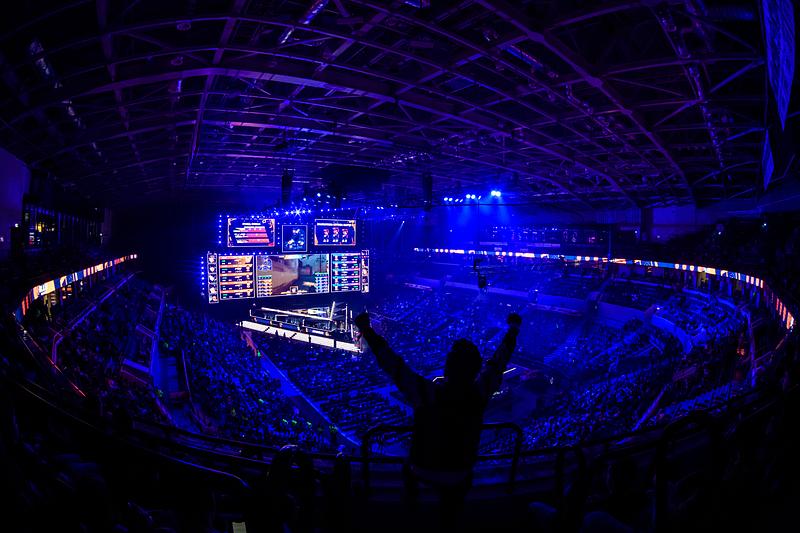
Between 2024–2025, Romania moved from local stages to events with European-level standards. In CS2, the LEGION Romanian Esports League (REL) Season 4 held its finals in Bucharest on December 14–15, 2024, with ~€30,000 in prizes and the AIMCLUB vs Nexus showdown. In Dota 2, PGL Wallachia Season 1 (Bucharest, May 10–19, 2024) brought together 16 teams for $1,000,000, won by Team Spirit 3–2 against Xtreme Gaming, peaking at ~487.4K viewers.
The ecosystem was strengthened by the IESF World Esports Championship 2023 in Iași and the Digital Crusade – Superbattles qualifiers at Cluj Arena (with a $10,000 prize pool and a route to EURO CS:GO). In media coverage, interest in broadcasts continues to grow; audiences also enjoy adjacent entertainment such as jocuri pacanele gratis 77777, but the true driver of the boom remains a clear calendar, stable rules, and LAN events with live audiences.
Audience Interest: Why the Explosion Makes Sense
The growth is no coincidence. Romania is producing tournaments with relevant prize pools, packed arenas, and strong broadcasts. When finals are played in Bo5 (Dota 2) or Bo3/Bo5 (CS2), and results are documented on HLTV/Liquipedia, fans come back—and they bring new viewers.
Key factors of the rise:
- International-scale prizes: PGL Wallachia S1 – $1,000,000, 16 teams, 3–2 grand final; Tier-1 standards confirmed in Bucharest.
- National leagues with LAN Finals: REL S4 – finals in Bucharest, ~€30,000 prize pool, teams well known to the public.
- “In the city” qualifiers: Digital Crusade – Superbattles at Cluj Arena (Sports Festival) with a $10,000 prize pool, visibility, and public exposure.
- Hosting expertise: IESF 2023 Iași – world championships tested infrastructure and volunteer networks.
- Education and access: events like Bucharest Gaming Week bring workshops and youth-friendly formats.
Editorial conclusion: The offering is consistent across the entire pathway—from qualifiers to major stages. This builds collective memory and predictability for sponsors and clubs.
CS2: National Leagues, Results, and Impact
CS2 has a solid backbone in Romania. REL Season 4 ran from November–December 2024, progressing from online → LAN stages, with the grand final in Bucharest. AIMCLUB defeated Nexus in a series that confirmed the value of structured playoff preparation.
CS2 highlights:
- REL S4 (2024): AIMCLUB vs Nexus final, ~€30,000 prize pool, production and refereeing aligned with European leagues.
- Competitive format: Bo3/Bo5 in playoffs, pre-announced map-pools and veto; players align training accordingly.
- Recognizable rivalries: top local teams generate familiar storylines, raising audience interest.
- Digital Crusade – Superbattles: public qualifiers at Cluj Arena, $10,000 prize pool, route to European competitions (EURO CS:GO).
Opinion point: For young players, there are no shortcuts. Progress comes from adapting to formats: map plans, utility execution, timeouts used to shift momentum. REL results show that discipline in these details makes the difference between finishing top 4 and reaching the finals.
Dota 2: Major Events and Audience Impact
In Dota 2, PGL Wallachia Season 1 reset expectations. Team Spirit won in Bucharest 3–2 against Xtreme Gaming; 16 teams, $1,000,000 prize pool, and ~487.4K peak viewers demonstrated that the local market can support Tier-1 events. The impact is twofold: global audience reach and validation of Romanian logistics.
Dota 2 highlights:
- PGL Wallachia S1 (May 10–19, 2024): Bo2/Bo3 groups, Bo3/Bo5 playoffs; final decided in game 5.
- Halo effect: international-grade local production attracts sponsors, media, and future editions.
- IESF Iași 2023: Romania delivered multi-title world championships; for Dota 2, national pathways can connect players to the global ecosystem.
Opinion point: Dota 2 positions Romania as an esports production hub. When prize pools are big and broadcasts stable, interest grows in both local leagues and mixed (university/semipro) appearances.
How to Enter the Circuit & What’s Next
Access starts with proper information and routine. Follow announcements from REL and Digital Crusade, study formats (Bo3/Bo5, map-pools, veto), and prepare a short portfolio (60–90s highlights + results). Aim for at least one LAN per season and sync training with calendars.
Practical steps for players:
- Track calendars: REL (CS2), Digital Crusade (CS2), PGL (Dota 2).
- Align training: 6–8 hours/week, goal-oriented scrims, VOD review within 24h.
- Define roles: IGL, entry, anchor/lurker (CS2) or draft synergy positions (Dota 2).
- Follow rules: anti-cheat, check-in times, communication with referees; keep logs and screenshots.
- Plan logistics: tested hardware, stable online connection; for LAN, arrive a day early for setup.
- Build visibility: post results, ask for feedback, follow established teams.
In the short term, the scene remains dynamic: REL continues with a new CS2 season and stage finals, Digital Crusade expands through public activations and regional routes, while PGL projects keep Romania in the Dota 2 major tournament rotation, consolidating its role as a host for top-tier competitions.
Impact and Directions for 2025–2026
The data is clear: REL S4 finals in Bucharest with ~€30,000; PGL Wallachia S1 with $1,000,000 and Team Spirit as champion; Digital Crusade at Cluj Arena with $10,000; IESF Iași 2023 as an infrastructure milestone. Together, they build a local “pathway”: qualifiers → leagues → LAN → regional stages.
Editorial conclusion: Romania doesn’t just consume esports—it produces it. When formats are clear, prize pools relevant, and finals held on stage, audiences and sponsors return. For players, the baseline strategy holds: follow official channels, enter qualifiers, align routines with finals requirements, and constantly seek stage experience. That’s how popularity grows—from verifiable results and events that deliver, season after season.
